The above drugs must be used for at least three months to achieve a lasting beneficial effect.
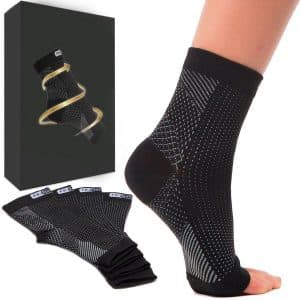
- Removal of a Morton's neuroma
- causes of this disease
- When is Morton's neuroma operated on?
- Diagnosis and preparation for surgery of Morton's neuroma
- Alternative causes of forefoot pain
- Treatment of interdigital neuralgia
- Main Points
- Recovery and maintenance phase of metatarsalgia
- Exercises against metatarsalgia
- Surgical treatment of Morton's neuroma
- Prevention of Morton's neuroma
- metatarsalgia
- Treatment
- Clinical examination
- Additional investigations
- Non-surgical treatment
- Adverse effects of Morton's disease
- prognosis of recovery
Removal of a Morton's neuroma
Morton's neuroma, or Morton's metatarsalgia, is a condition in which fibrous tissue has grown around one of the branches of the supporting nerve. The nerve between the third and fourth fingers is most commonly affected, less often between the second and third fingers. The pathological process develops as a result of irritation and compression of the nerve. The disease is characterized by a burning, stabbing pain in the sole of the foot, tingling and numbness in the toe. It feels like a pebble has entered the shoe.
According to statistics, one in three people is affected by Morton's neuroma. Women are affected 8-10 times more often than men - the cause is wearing uncomfortable high-heeled shoes.
The symptoms can often be controlled with simple measures, e.g. B. by changing the paragraph to a lower one. However, in some cases, special treatment, including surgery, is required.
causes of this disease
- shape of the foot. It most commonly affects people who have flat feet, high arches, and other deformities. This leads to instability in the toe joints.
- diseases of the foot. For example bunions, hallux valgus and hammer toe deformities.
- Shoes that put pressure on the toes and balls of the feet: high heels (especially over 5 cm), narrow shoes, wrong size, pointed toes.
- practice of certain sports. For example, when you run or play tennis, the balls of your feet feel increased pressure. And when skiing or climbing you have to wear uncomfortable, tight shoes.
- Foot injuries are also more common among athletes.
Patients often ask this question to the doctors in our clinic. Some have heard or read that this pathology 'enlarges' the nerve. Others are confused by the '-oma' ending. – is usually the name for benign and malignant tumors. Still others know that neuromas refer to tumors of nerves in different parts of the body.
The name Morton's neuroma is misleading because the disease has nothing to do with real tumors. It develops according to the following pattern:

- A branch of the sooty nerve is often compressed and irritated;
- and a fibrous tissue forms around the nerve, a sort of scar;
- An inflammatory process begins.
When is Morton's neuroma operated on?
In order to be able to correctly assess the patient's condition and prescribe the appropriate treatment, the specialists at the joint clinic need current MRI results. Based on the MRI scan, the doctor determines to what extent Morton's neuroma requires surgical treatment. If there are certain indications, the best surgical technique for the patient is determined.
In the early stages, the disease is treated with conservative methods such as special insoles and foot exercises. If the patient's quality of life is severely restricted or if he has severe pain despite conservative treatment, the doctor will refer the patient for surgery. If the thickening is 0.8 cm, a nerve-sparing operation (neurolysis) is performed. If Morton's nerve swelling is greater than normal, the nerve is removed through a neurectomy.
Diagnosis and preparation for surgery of Morton's neuroma
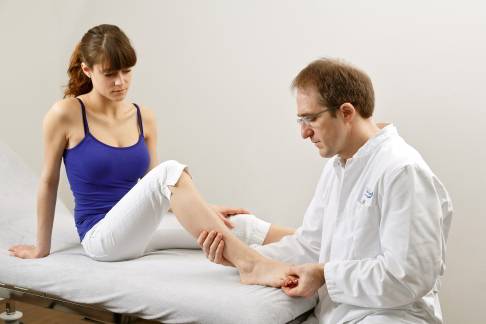
Clinical evaluation of Morton's neurinoma using a provocation test (Mulder's test): The podiatrist diagnoses the condition by pressing on the heads of the metatarsal bones while palpating the spaces between the toes, causing pinching pain. © Joint Surgeon
Alternative causes of forefoot pain
- Inflammation of the joint between the tarsal bones and the phalanges
- damage to a nerve
- Stress fractures (fatigue fractures) of the metatarsal bones
- Changes in soft tissue structure, including scars, warts and tumors
- Abnormal weight distribution, as in severe flat feet
Before treating Morton's neuroma, the doctor performs a full clinical and imaging diagnosis, which includes an initial medical history, physical examination, and contrast-enhanced MRI. During the MRI examination, the patient is in the supine position, during the X-ray in the standing position. In order to determine how the pressure is distributed under the sole of the foot, the joint clinic carries out a podometric examination (pedobarography). Based on the results, the doctor decides whether the procedure should be performed.
If your state of health does not prevent surgical treatment, the surgeon will discuss the procedure in detail and inform you about possible complications. You will also be referred to an anesthetist who will reassess your exam and determine if your condition is amenable to the administration of anesthetics. The operation of Morton's neuralgia is usually performed the next day in consultation with the operating doctor and the anesthetist.
Treatment of interdigital neuralgia
newly emerged neuralgia disappears quickly with suitable footwear and insoles or with the local administration of a local anesthetic. Using a pad placed proximal to the metatarsal head of the affected compartment may also help relieve symptoms.
For neuromas Periarticular infiltration with long-acting glucocorticoids in combination with local anesthetics is required and may need to be repeated several times. The preparation is injected into the space at the level of the metatarsophalangeal joints and the needle is inserted at a 45° angle to the foot (see guidelines for corticosteroid injections Use of glucocorticoid injections). Treating the neuroma with orthotics, rest, cold compresses, and well-fitting footwear often relieves symptoms. Nerve ablation techniques, including injecting 20% % ethanol with a local anesthetic directly into the nerve under ultrasound guidance or cryogenic freezing of the nerve, are helpful in relieving symptoms. When other treatments fail, the neuroblastoma is surgically removed, often resulting in complete resolution of the pain. Other neuroblastomas (blunt neuroblastomas or amputational neuroblastomas) can also occur at the site of the nerve transection and may require additional surgery.
Main Points
Tarsal pain can be caused by irritation or slight thickening of the interdigital nerves.
Initial mild pain from wearing tight shoes may worsen and progress to stabbing pain, sometimes with paresthesia and/or a foreign body sensation.
The disease can be diagnosed by the clinical presentation, including pain, and reproduction of symptoms by palpation between the toes.
Treatment consists of changing shoes, prescribing injections of local anesthetic and sometimes glucocorticoids, use of nerve ablation technique, or surgery.
Copyright © 2023 Merck & Co., Inc, Rahway, NJ, USA and its subsidiaries. All rights reserved.
Recovery and maintenance phase of metatarsalgia
After a period of acute pain, the metatarsalgia patient should gradually return to more intense activity to allow the muscles and joints to heal and strengthen without causing further damage. The goal of this phase is to restore the foot's normal biomechanics and relieve pressure and pain.
At this stage, the patient must perform a series of exercises designed by the physical therapist to improve leg strength, stability, and range of motion.
This phase can be difficult to sustain, especially for professional or highly motivated athletes who want to return to strenuous activity as soon as possible. It is important that the relationship between patient and therapist is based on trust. Patients should understand that their body needs a phase of less exertion.
Visit the Pravda.ru Telegram channel with the opportunity to express your own opinion)
Add HealthPravda to your sources Yandex.News or News.Google
We also invite you to join our communities Zen, VKontakte, Classmates, YouTube.
Exercises against metatarsalgia
There aren't many specific exercises for metatarsalgia, as it's a general term for pain in a specific area, but it's commonly recommended to include strengthening the meniscus of the foot and stretching the plantar fascia, among other things.

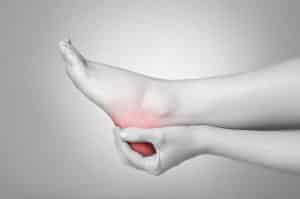
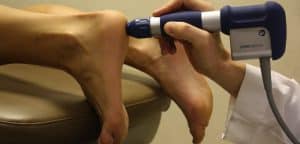
Frequently asked questions about metatarsalgia, toe pain/forefoot pain and forefoot pain:
Surgical treatment of Morton's neuroma
When is Morton's neuroma operated on? Your surgeon will select the best and most appropriate surgical treatment:
- if there is no improvement within 2-3 months after treatment;
- in the development of paralysis one month after the injury;
- with exacerbation of sensorimotor disorders and pain syndrome.
Morton's neuroma surgery aims to restore normal pressure distribution between the heads of the metatarsal bones and to correct the deformity of the toes that often accompanies this.
Orthopedic therapies include muscle transplants, arthrodesis in a functionally favorable position, joint fusion, etc.
- Removal of Morton's neuroma and neurectomy.
Excision of the inflamed, hypertrophied part of the nerve. - Liberation.
Section of the transverse ligament between the metatarsal bones. - osteotomy.
Fracture of the metatarsal and release of the nerve from compression. - Clayton Hoffman operation.
Resection of all the heads of the metatarsal bones and the base of the phalanx.
A minimally invasive and effective treatment for neuromas is high-frequency current ablation, in which the nerve is 'etched' with high-frequency currents. This prevents the transmission of pain impulses, reduces inflammation and improves microcirculation in the affected area.
After the operation and rehabilitation, anti-inflammatory and microcirculatory treatments are prescribed:
Full weight bearing of the leg after removal of Morton's neurinoma is possible about a month after the pain syndrome subsides and mobility is restored.
Using various technologies and methods, the specialists of the MEDICOM Clinic at the Obola Hospital are able to diagnose and treat all types of orthopedic diseases, including Morton's neuroma, at a high level.
Prevention of Morton's neuroma
Morton's neuroma commonly develops in people who wear tight, high-heeled shoes with narrow toes. Therefore, tight and uncomfortable shoes should be avoided, as well as poor quality shoes. Shoes should be made of natural materials, have good supination, be true to size, and be comfortable to wear.
The development of a neuroma can be prevented by early treatment of foot diseases:
Chronic diseases that can promote the development of neuromas should also be treated: obesity, diabetes, arteriosclerosis, arteritis.
Regular foot massages, foot baths with herbal teas and sea salt should be carried out during heavy physical and standing work, which is accompanied by a heavy load on the legs.
metatarsalgia
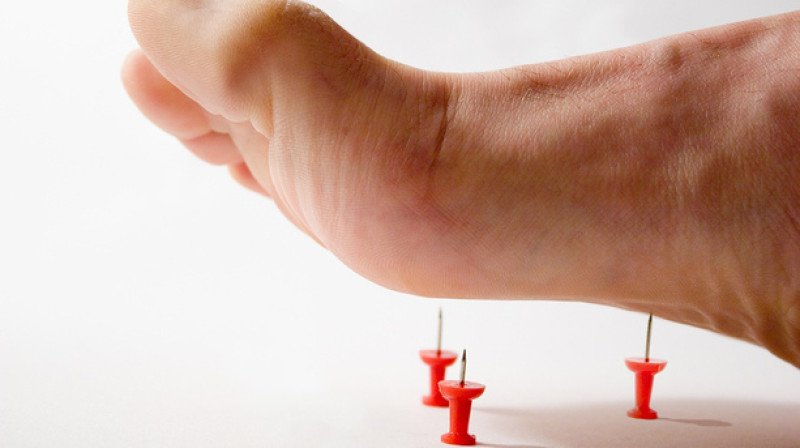
Metatarsalgia most commonly develops as Morton's neuroma, which is an overgrowth of tissue from the nerve that runs along the sole. Often the pathological process develops between the third and fourth toes.
In the first stage of the disease, the symptoms are not very pronounced. The disease more often affects women, who complain of numbness and pain in their toes when wearing uncomfortable shoes. The complaints are acute. In the early stages, the disease only becomes noticeable after a long walk due to the increased load on the foot.
When the first symptoms appear, an orthopedist should be consulted.
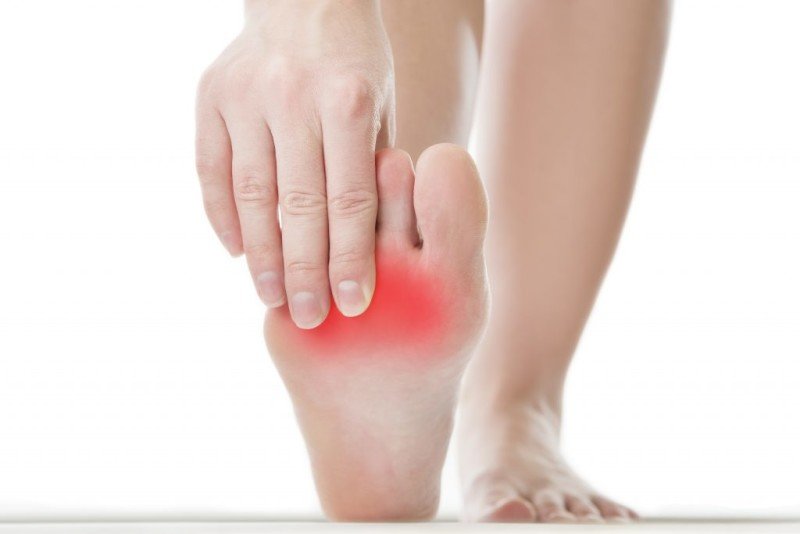
Treatment
There are several nonsurgical treatment options. In the early stages of the disease, special orthoses are used to relieve pain. In addition, physiotherapy is used. Here, non-steroidal anti-inflammatory drugs, drug blockades, therapeutic exercises and massage are prescribed.
Surgical intervention is only indicated when conservative therapies have failed. The operation is performed through several incisions, through which the doctor makes an oblique osteotomy at the junction of the head and neck of the metatarsal bone. In this way, the doctor moves the head up, which restores the arch of the foot. The procedure has a positive effect and after a short time the affected person returns to his normal life. In severe cases, surgery is performed with titanium implants.
Clinical examination
Patients with symptoms of classic Morton's neuroma have tenderness at the base of the toes (Figure 3). In addition, constant pressure on the forefoot can make symptoms worse. Patients may also experience numbness on the sides of one or two fingers as this corresponds to the area of innervation of the affected nerve (Figure 4).


Additional investigations
Ultrasound or MRI are the best ways to find a neuroma. Routine radiographs of the foot are inconclusive with this pathology. X-rays can help detect bony abnormalities, such as B. the presence of bone overgrowths (osteophytes).
Non-surgical treatment
Non-surgical treatment can be very effective but takes longer than surgery.
Non-surgical treatment includes the following
- wearing comfortable shoes
- Using a gel sockliner to reduce stress on the forefoot.
- Restriction of activity, meaning reducing or eliminating activities that make the pain worse. For example, avoid standing for long periods or other activities that increase the pressure on the forefoot.
- A local anesthetic can reduce the inflammation associated with the nerve.
Steroid injections can temporarily relieve symptoms. In addition, it was previously believed that injecting alcohol into the nerve would cause controlled nerve death, thereby eliminating symptoms. There are currently no successful scientific studies demonstrating the advantage of this procedure over other standard non-surgical procedures. Additionally, there is concern that alcohol can cause excessive scarring and damage to other important structures in the area.
Adverse effects of Morton's disease
If you delay visiting a specialist or do not follow the recommendations of an orthopedist, the pathological process can cause the following undesirable effects
- A pain syndrome of significant severity that cannot be treated even with strong painkillers;
- lameness;
- inability to wear modern, fashionable footwear;
- scoliosis;
- Mental disorders and depression.
prognosis of recovery
The prognosis is quite favorable. If conservative measures are unsuccessful, complications can be prevented by removing the Morton's nerve with a laser. This prevents further loss of foot function and complete loss of motor function.
If the patient consults a specialist in the early stages of the disease, the inflammation can be treated with physiotherapy and medication. If not treated in time, it can lead to serious complications. The affected area expands and the pain attacks become longer and more intense. In advanced stages of the disease, Morton's neuroma can only be treated surgically, as reports confirm.
Oleg Petrovich Tatarinov

Top-class doctor, neurologist, physiotherapist, UWT specialist, leading specialist of the Zdorovye Plus network.
medical experience more than 40 years
Read more:- metatarsalgia.
- metatarsal bones.
- Morton's Neuroma Ointment.
- Morton shoe inserts.
- heel nerve.
- hindfoot.
- The tarsal bone hurts from above - what to do?.
- Metatarsal tarsal bones.
